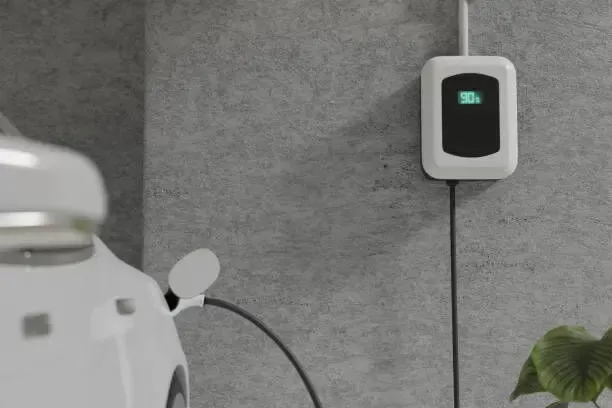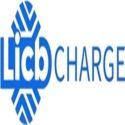Notifications

7 minutes, 11 seconds
-4 Views 0 Comments 0 Likes 0 Reviews

Understanding the Power and Performance of a 40 Amp Level 2 EV Charger
As electric vehicles (EVs) become increasingly common worldwide, efficient home and public charging solutions are in high demand. Among these, the 40 amp Level 2 charger has emerged as a popular and practical choice for many EV owners. But what sets this China EV Charger apart, and just how fast can it charge your vehicle? This article breaks down the essentials of a 40 amp EV charger—explaining its power, performance, installation considerations, and how to decide if it’s right for you.
An ampere (amp) measures electrical current—the rate at which electricity flows. Think of amps like the volume of water flowing through a pipe: the higher the amps, the more electricity is delivered per second.
In EV charging:
A 32 amp charger supplies less current than a 40 amp charger.
A 50 amp charger supplies more current than a 40 amp charger.
The amperage directly impacts how quickly your EV battery can be charged, but is ultimately limited by the vehicle’s onboard charger capacity.
Your home's electrical panel supplies a limited number of amps (usually between 100 and 200 amps), which power all devices and appliances. Adding a 40 amp charger means dedicating a substantial portion of that capacity to EV charging, typically requiring:
A dedicated 240V circuit with a 50 amp breaker (per National Electrical Code safety standards).
Possible electrical panel upgrades if capacity is insufficient.
Professional installation by a licensed electrician.
A Level 2 charger operates on 240 volts and delivers faster charging compared to Level 1 chargers that use standard 120V outlets. A 40 amp charger delivers up to 9.6 kilowatts (kW) of power, making it a “sweet spot” for many EV users—faster than lower-amperage units but without the complexity or cost of DC fast chargers.
These chargers are suitable for:
Home garages
Public charging stations
Workplace parking
Fleet depots
Charging speed depends on both the charger’s output and your EV’s battery size and onboard charger. For example:
A 40 amp charger at 240 volts delivers about 9.6 kW.
To fully charge a 60 kWh battery from empty takes roughly 6.25 hours (60 ÷ 9.6).
Typical full charge times range from 6 to 7.5 hours depending on battery efficiency, onboard charger limitations, and environmental conditions.
For daily use, most drivers don’t charge from 0% to 100%. A 40 amp charger can add approximately 25 to 30 miles of range per hour, ideal for overnight charging or daytime top-ups.
Your EV’s onboard charger controls how much current the vehicle can accept:
If the onboard charger maxes out at 32 amps, a 40 amp charger won’t increase charging speed beyond 32 amps.
Vehicles with higher onboard limits (48 amps or more) benefit more from 50 amp or larger chargers.
Thus, knowing your EV’s maximum charging input is crucial to selecting the right charger.
Advantages include:
Faster charging: Cuts charging time significantly compared to Level 1 or lower-amperage chargers.
Suitable for large batteries: Supports EVs like Tesla Model Y, Ford Mustang Mach-E, Hyundai IONIQ 5, and others.
Convenient overnight charging: Fully charges most EVs in under 8 hours.
Future-proofing: Supports newer EVs with faster charging capabilities.
Installation considerations:
Requires a dedicated 240V circuit with a 50 amp breaker.
Must be installed by a licensed electrician.
May require panel upgrades or load management systems in some homes.
Most modern EVs are compatible with Level 2 chargers using the J1772 standard connector. Tesla owners can use these chargers with an adapter. While older or lower-end EVs may not fully utilize the 40 amp capacity, the charger will safely deliver the maximum current the vehicle can accept.
| Feature | 32 Amp Charger | 40 Amp Charger | 50 Amp Charger |
|---|---|---|---|
| Power Output (kW) | 7.7 kW | 9.6 kW | 11.5–12 kW |
| Typical Charging Time | 8–10 hours | 6–7.5 hours | 5–6 hours |
| Circuit Breaker | 40 amp | 50 amp | 60 amp |
| Installation Cost | Lower | Moderate | Higher |
| Best For | Daily charging | Balanced speed | Future-proofing |
For most EV owners, a 40 amp Level 2 charger strikes a great balance between speed, cost, and ease of installation. It offers substantial improvements over Level 1 charging and lower-amperage units without the higher costs and infrastructure demands of DC fast chargers or 50+ amp setups.
As EV technology evolves and battery sizes grow, installing a 40 amp charger today offers convenience and efficiency that will meet your needs for years.Know more about China Manufacturer
Q: Can I install a 40 amp EV charger myself?
A: It’s strongly recommended to hire a licensed electrician to ensure safety and code compliance.
Q: Is a 40 amp charger portable?
A: Most are hardwired or wall-mounted, but some portable Level 2 chargers rated for 40 amps exist.
Q: Will a 40 amp charger damage my car?
A: No. The EV only draws the current it can handle safely.
Q: How much does a 40 amp EV charger cost?
A: Chargers cost $400–$800, with installation costs ranging from $300 to $1,200 depending on home electrical conditions.
China EV Chargers EV Charger Manufacturer EV Charging Solutions

